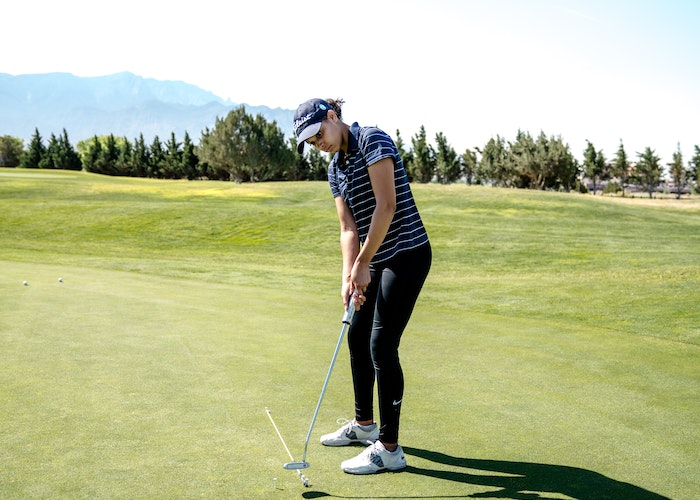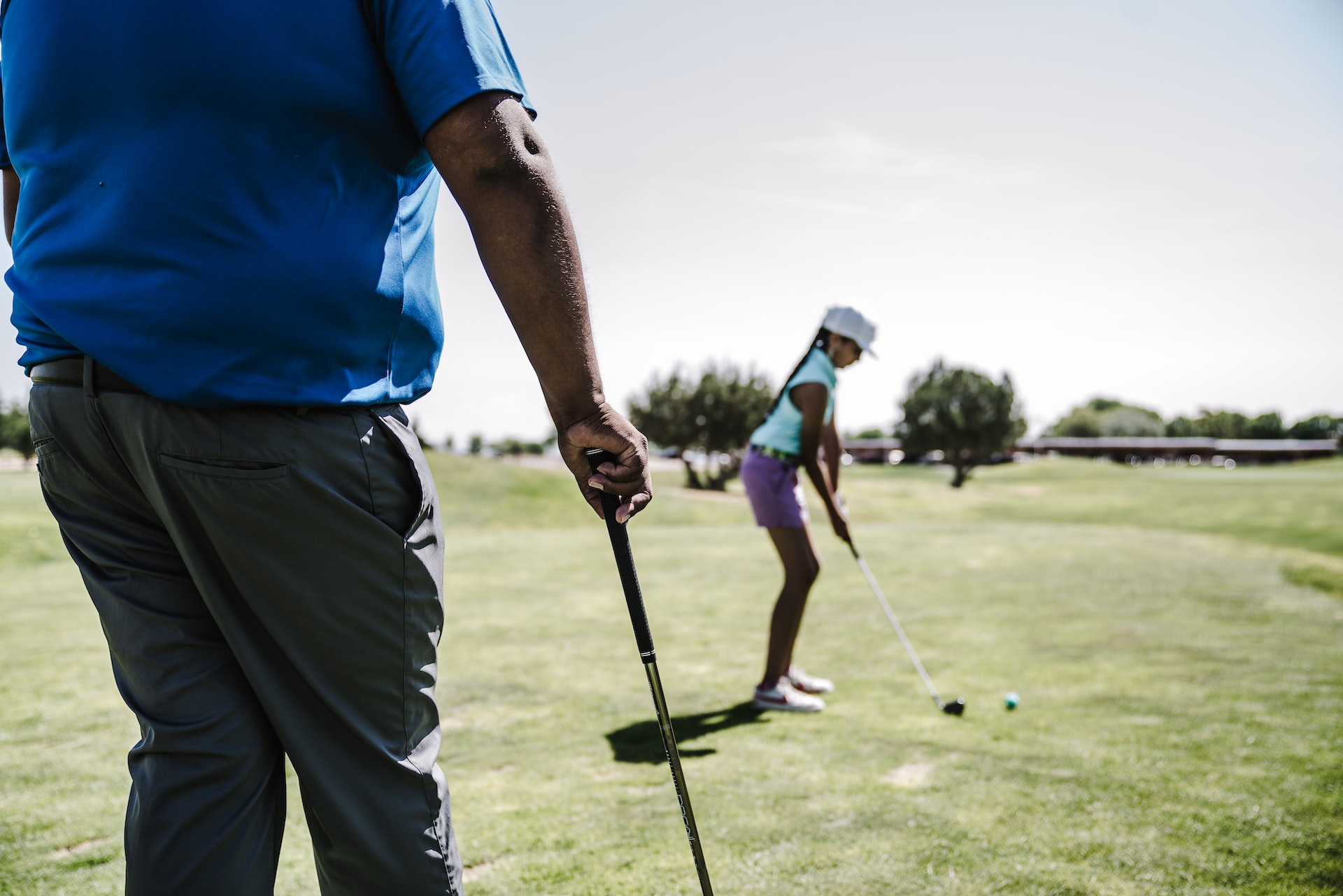Flexibility plays a critical role in achieving a good golf swing. Without proper flexibility, it’s challenging to achieve the full range of motion necessary for an effective swing, leading to missed shots and lower scores. In this post, we’ll discuss the role of flexibility in a good golf swing and provide tips and exercises to help you improve your flexibility and your game. you can unlock your full swing potential and enhance your overall golf performance.
The multiple roles of flexibility in a golf swing are

1. Increased Range of Motion
Flexibility directly impacts your range of motion, enabling you to achieve a full and unrestricted swing. A flexible body can rotate more efficiently, allowing for a longer backswing and a more powerful downswing. By improving your flexibility, you can extend your backswing, generating greater clubhead speed and distance.
2. Proper Body Rotation
Effective body rotation is key to a consistent and powerful golf swing. A lack of flexibility can hinder your ability to rotate your shoulders, hips, and spine smoothly. This limitation can result in a restricted swing, causing compensations and loss of power. Improved flexibility allows for better separation of the upper and lower body, facilitating a more coordinated and efficient swing motion.
3. Balance and Stability
Flexibility contributes to balance and stability during the golf swing. A flexible body is more capable of maintaining proper posture and balance throughout the swing. It allows you to stay grounded and centered, preventing excessive swaying or sliding. Enhanced stability leads to better ball striking and control over your shots.
4. Injury Prevention
Flexibility plays a significant role in preventing injuries during the golf swing. A lack of flexibility can place undue stress on muscles, tendons, and joints, increasing the risk of strains, sprains, and other golf-related injuries. By incorporating flexibility exercises into your routine, you can improve joint mobility, reduce muscle tension, and minimize the likelihood of injuries.
5. The Importance of Flexibility in Golf
Flexibility is critical for a good golf swing as it enables the golfer to achieve a full range of motion in their swing. This range of motion allows the golfer to create more clubhead speed, generate more power, and achieve greater accuracy. Additionally, flexibility can help prevent injuries by reducing the strain on joints and muscles during the swing.
Tips for Improving Flexibility for Golf

- Warm-Up Before Your Round
Before you hit the course, it’s essential to warm up your muscles and joints to improve flexibility and prevent injuries. Start with some light cardio, such as a brisk walk, followed by stretching exercises that target the hips, back, and shoulders.
- Stretch Regularly
Stretching regularly is essential for maintaining and improving flexibility. Focus on stretching exercises that target the muscles used in your golf swing, such as the hip flexors, hamstrings, and shoulders. Incorporate dynamic stretching exercises that simulate the movements of your golf swing to improve mobility and flexibility.
- Practice Yoga
Yoga is an excellent practice for improving flexibility and mobility, making it an ideal choice for golfers. Yoga poses like the downward dog and the warrior pose can help stretch the hamstrings, hips, and back, while the pigeon pose can help stretch the hip flexors.
- Use a Foam Roller
A foam roller is a useful tool for improving flexibility by massaging the muscles and reducing muscle tension. Roll out your muscles before and after your round to help loosen them up and improve flexibility.
- Consult with a Professional
If you’re serious about improving your flexibility for golf, consider consulting with a fitness professional who specializes in golf-specific training. They can help assess your current level of flexibility and create a personalized program to help you improve your mobility and flexibility.
Flexibility Exercises for Golfers

To improve flexibility for your golf swing, incorporate the following exercises into your training routine:
a. Dynamic Stretching: Perform dynamic stretches that mimic the movements of the golf swing. Examples include trunk twists, arm circles, and leg swings. These exercises warm up the muscles and increase flexibility without compromising stability.
b. Shoulder and Torso Mobility: Use exercises such as shoulder rotations, arm crossovers, and torso twists to improve flexibility in the shoulders and torso. These movements enhance your ability to rotate the upper body during the swing.
c. Hip Mobility: Work on hip mobility through exercises like hip circles, lunges, and hip openers. Improved hip flexibility allows for better lower body rotation and weight transfer during the swing.
d. Hamstring and Hip Flexor Stretches: Stretch the hamstrings and hip flexors regularly to increase flexibility in the lower body. These muscles play a vital role in maintaining balance and generating power during the swing.
e. Core Strengthening: Strengthening the core muscles, including the abdominals and lower back, provides stability and support for a fluid swing. Incorporate exercises such as planks, bridges, and rotational exercises to develop core strength and stability.
Conclusion
In conclusion, flexibility plays a critical role in achieving a good golf swing. By incorporating stretching and mobility exercises into your routine, you can improve your flexibility and take your game to the next level. Remember to warm up before your round, stretch regularly, practice yoga, use a foam roller, and consider consulting with a professional to develop a personalized program. With time and dedication, you’ll achieve greater flexibility and a more successful golf game. Flexibility is a key component of a good golf swing. It improves your range of motion, enables proper body rotation, enhances balance and stability, and helps prevent injuries. By incorporating flexibility exercises into your training routine, you can unlock your swing’s full potential and achieve better results on the golf course. Remember to warm up before each round or practice session and make flexibility training a regular part of your golf fitness routine. With increased flexibility, you’ll experience improved swing mechanics, increased distance, and enhanced overall performance in your golf game.



